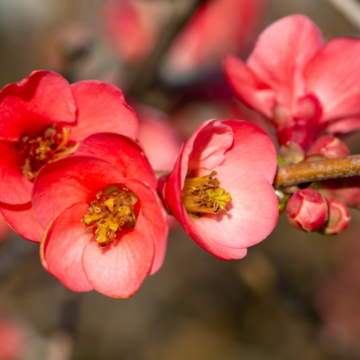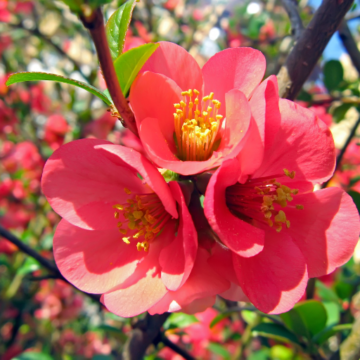In the realm of flowers, few can match the dreamy charm and effortlessness of the Ranunculus. Belonging to the Ranunculaceae family, this bloom has a rich history, deep cultural significance and a plethora of artistic and emotional connotations. From ancient times to modern art and therapy, the Ranunculus continues to hold sway over hearts and minds worldwide.
The Ranunculus has an ancient lineage, with its name originating from the Latin word “rana,” meaning frog, possibly due to its preference for moist habitats. This flower has made its presence felt in various cultures throughout history. In Persian culture, the Ranunculus symbolised charm and attraction. In Victorian flower language, it was used to convey messages such as “I am dazzled by your charms.”

The Ranunculus’ layers of delicate petals have inspired artists across the centuries. From Renaissance paintings to modern-day illustrations, its exquisite form and vibrant colours make it a favourite subject for painters, photographers and designers. Symbolising charm, attractiveness and radiance, the Ranunculus is often associated with spring, renewal and transformation.
The Ranunculus, with its vibrant hues, has been attributed with various healing powers and medicinal properties in traditional herbal and not so traditional medicine. While not commonly used today for medical purposes, it was believed to have the ability to heal wounds, ease pain, and even cure illnesses including arthritis, asthma, hay fever, rheumatism, psoriasis, gut diseases and rheumatic diseases. https://www.ncbi.nlm.nih.gov/pmc/articles/PMC9227133/#:~:text=Ranunculus%20arvensis%20Linn.%20has%20been,activities%20%5B49%2C62%5D. Symbolically, it represents courage and overcoming challenges, as its bright colours burst forth even in adverse conditions.
The Ranunculus is a prized gem in the cut flower industry, used in bouquets and arrangements with its irresistible beauty. Cultivated in a range of shades, including white, pink, red, yellow and orange, these blooms are a winter/springtime favorite. They are typically grown from corms, which are underground storage organs similar to bulbs. They thrive in well-draining soil and ample sunlight.

The “Carlsbad Flower Fields” in Carlsbad, California, offer one of the largest and most spectacular displays of Ranunculus blooms.
Spanning across 55 acres, the expansive Giant Tecolote Ranunculus flower display within The Flower Fields at Carlsbad Ranch, blossoms for around six to eight weeks annually. This vibrant spectacle, from early March to early May, serves as a remarkable reawakening of the renowned fields. Beyond its visual splendor, this annual kaleidoscope of colours has ingrained itself in the local heritage, functioning as a natural herald of spring’s arrival in Southern California. https://www.theflowerfields.com/
Ranunculi, when cut at the right stage of maturity, have a decent vase life of about 5 to 7 days. To ensure they last longer, follow these steps:
- Clean Vase: Use a clean vase with fresh water.
- Trim Stems: Cut the stems at a slant under running water.
- Remove Foliage: Remove any foliage that will be submerged in water.
- Water Change: Change the water every two days to prevent bacteria buildup.
- Cool Environment: Keep them in a cool spot away from direct sunlight and drafts.
Flowers, including Ranunculi, have been found to have a positive impact on mental health. Their presence can uplift mood, reduce stress, and improve overall well-being. The act of caring for and appreciating their beauty can provide a sense of accomplishment and a momentary escape from the pressures of daily life.

Fun Facts
- The Ranunculus genus comprises around 600 species, including both wild and cultivated varieties.
- Ranunculus is known by various charming nicknames, such as “Persian Buttercup” and “Coyote’s Eyes.”
- In the language of flowers, Ranunculus often signifies radiant charm and attraction.
- The petals of the Ranunculus are edible and can be used to add colour to salads and desserts.
The Ranunculus stands as a testament to nature’s artistic prowess, offering a blend of beauty, symbolism and emotional resonance. From its historical roots to its modern-day impact on mental health, this charming blossom continues to weave its spell, enriching lives and inspiring creativity. Whether in a bouquet, a vase, or a field, the Ranunculus radiates a timelessness that captivates hearts across seasons and cultures.
Find out how you can benefit from the power of flowers – Learn More






